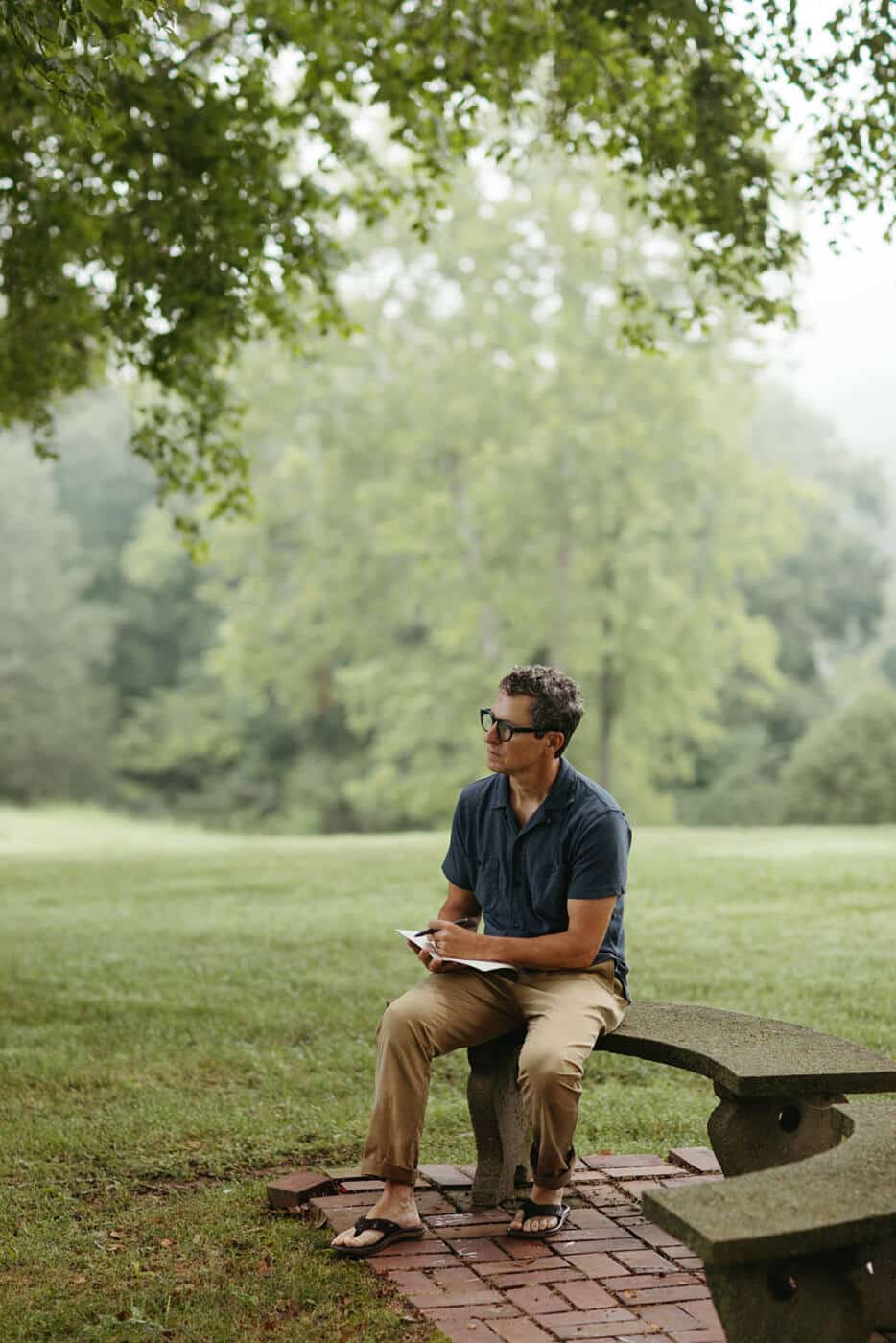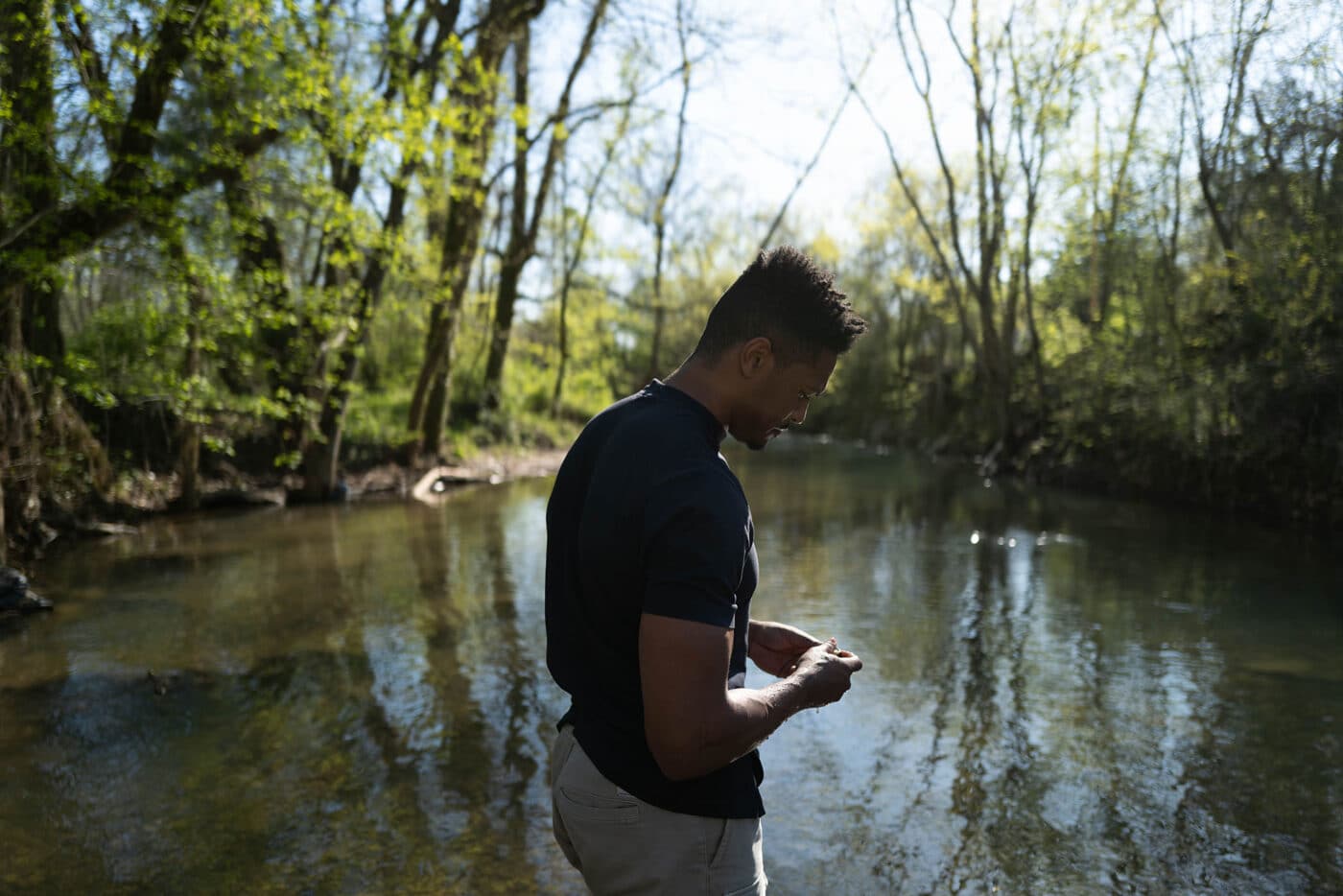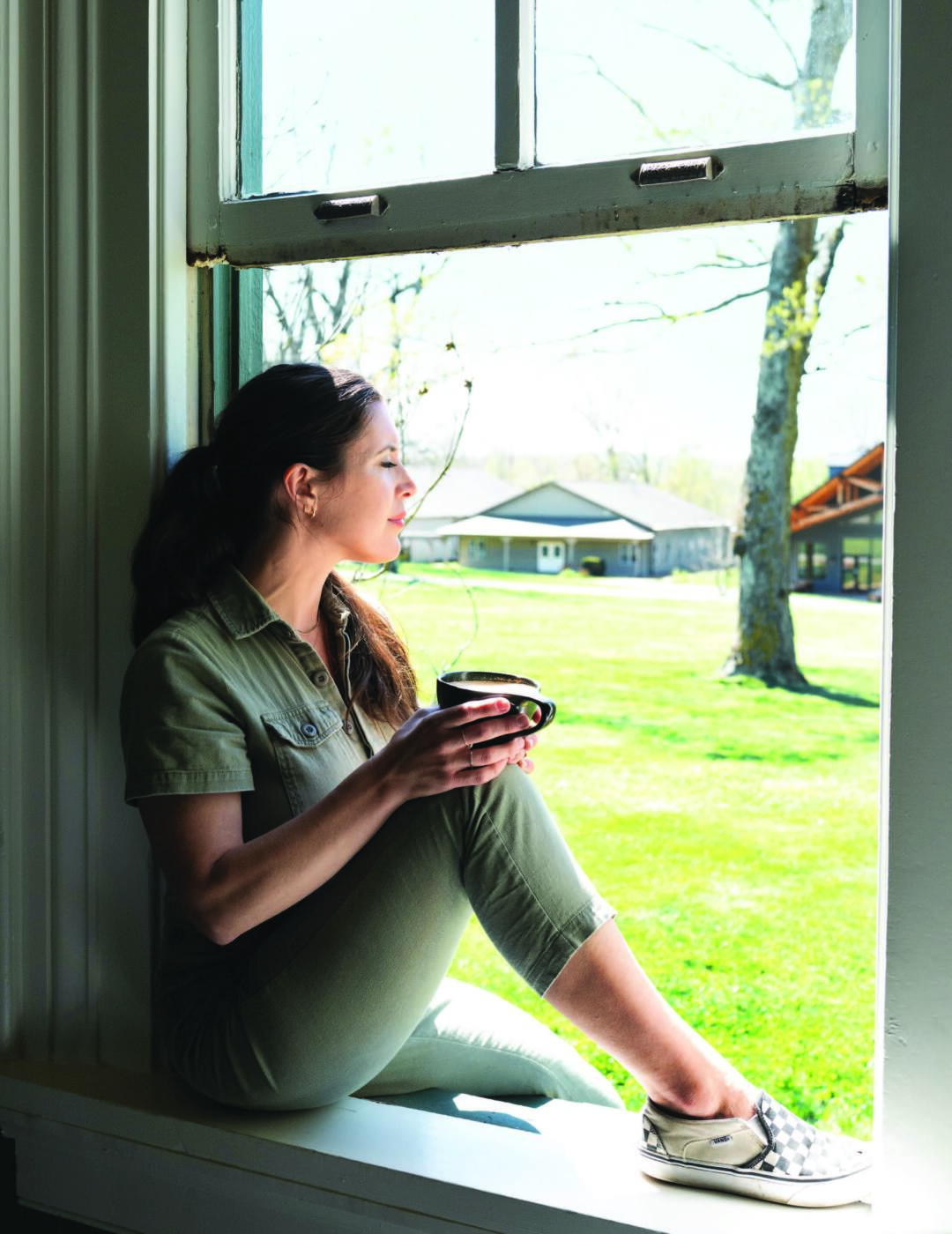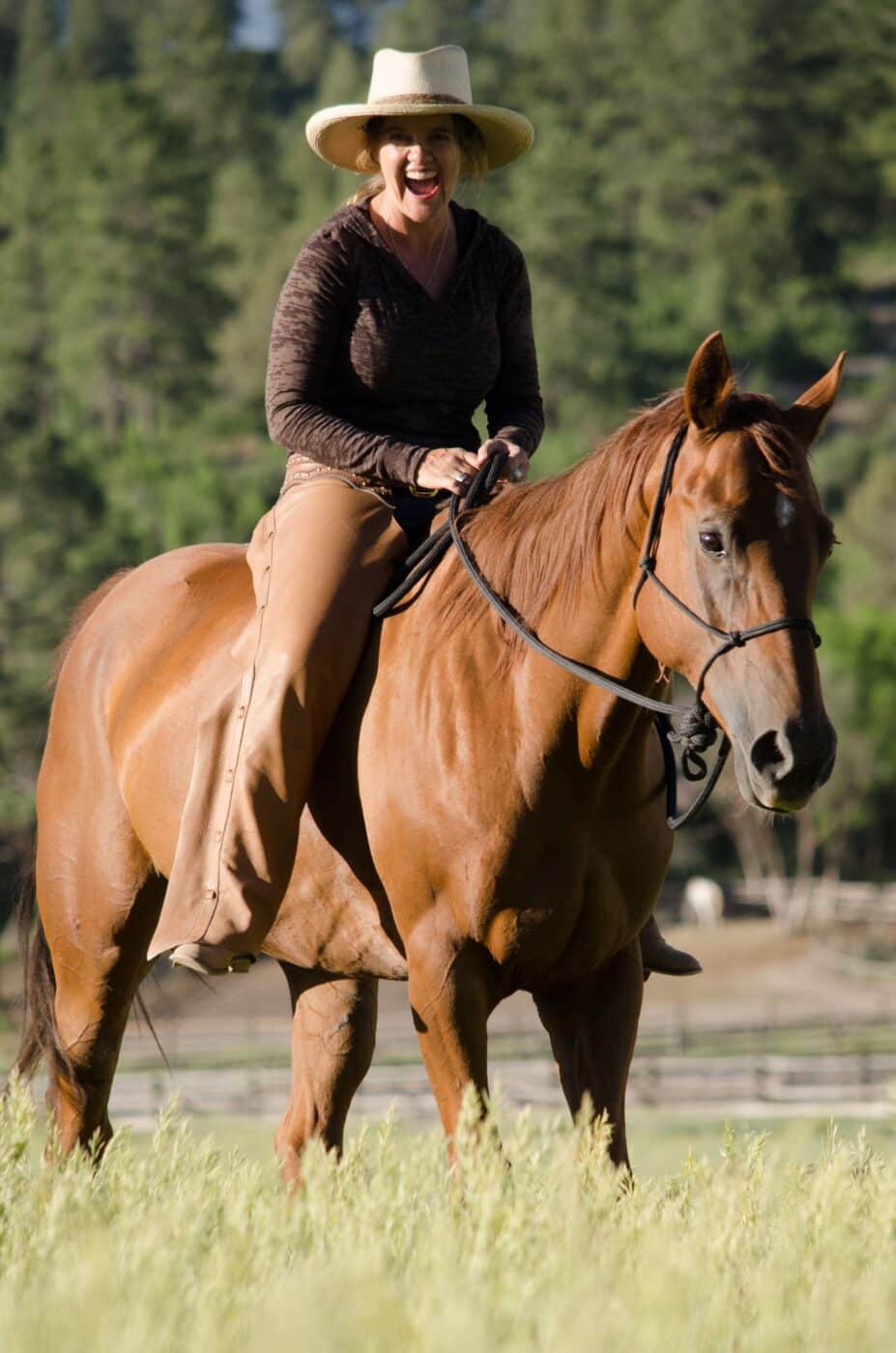Let It Go, Let It Go
The Myth of Moving On
From the Onsite Journal — Volume 4 | Written by Connie Lawrence, LISW-SPAT
For as long as I can remember, it has irked me when someone suggests I just “let go” of the thing bothering me. It’s a visceral, embodied experience for me. Even when I generously assume they mean well, the saying implies that my discomfort is trivial, and I feel dismissed.
It turns out I am not alone in my experience. Dr. Laura Otis, neuro-biologist and literary scholar, points to the dangers of the phrase, including the possibility of making someone feel worse when we suggest letting go of something that is not “let-go-able.” The metaphor, conjuring images of a hand grasping an item, doesn’t work for many of our struggles. Our feelings or wounds, for example, are not separate from our being. They’re a part of us, “like a liver or a kidney” (2019).
Maybe Dr. Otis is right: it’s time for an update.
What if we didn’t have to “let it go” to find freedom from the experiences holding us back?
In this article, I will offer three alternative responses to the moments when we are urged to just “let go.” Each situation includes a somatic practice inviting your body to fully engage in the process and offering a doorway into deep and wholehearted healing.
1. Let go or lean in and heal?
We’ve all been there. A well-meaning person suggests we let go of a painful emotion and simply “move on.” Unfortunately, our bodies aren’t designed to let go of pain, suffering, sadness, or trauma as much as we might wish. Just the opposite, a nagging wound is often a signal that something is missing.
And very often the missing piece is someone who “gets us.” Whether it is a good friend, a therapist, or a support group, feeling understood allows us to relax into the healing process, feel our emotions, and come out on the other side with wisdom and compassion.
Our bodies have a way of letting us know what we feel before we can comprehend it consciously. What we hold, if not felt, cannot be released.
Rather than letting it go, we might do better to lean in and let it heal. If we tune in rather than numb out, we discover that the annoying, pesky issue is quietly alerting us to something else. Something new, something different.
How do we recognize a nagging issue and lean into the sensations of our body? The most apparent sign is repetitive thoughts. You can notice how your body pairs with those thoughts to build somatic awareness. Is there a clenching jaw, tightening of the throat, or narrowing eyes? Does your posture shift? Do you feel heat or pulsing somewhere?
By simply noticing, without trying to change anything, we open dialogue with our body through the language of sensation.
EMBODIED PRACTICE: Let It Heal
This meditation invites the body’s intelligence to come forward without trying to change it or paper over it with a positive thought. Instead, we befriend the body’s discomfort and welcome its message. It can be done solo or in a group.
Invitation: Begin shifting from the thinking mind to the feeling and sensing body by dropping your attention below the jaw. Eyes open or closed, start to pay attention to the sensations of your body, beginning with temperature, pressure, or movement. The key is to just notice, don’t try to change anything.
- Can you find one part of your body that is warmer and one part that is cooler than another?
- Can you find one spot of tension and one spot of openness or ease?
- Can you find tingling or quietness?
Next, tune in to see if some part of your body wants your attention. Try placing a hand on that part as if to say, “I’m here. I’m listening.” Take a pause and listen. You can thank your body for its hard work and stay quiet, welcoming its presence and whatever emotional or physical responses follow. After a while, open your eyes and journal or share with a safe person about what you uncovered.
2. Let it go or let it stand?
A few years ago, I had a boyfriend who had a knack for delivering insults so cleverly hidden it was confusing. He covered everything with a boyish charm and a ridiculously handsome smile, which made it all seem harmless. I went along with the jokes for a while, ignoring the emotional impact and responding with the “niceness” I’d learned as a survival mechanism growing up in an alcoholic home.
When I finally did speak up, he would often respond with something dismissive like, “You’re too sensitive,” or a suggestion to “lighten up” or “let it go.” All the classic phrases of emotional abuse and gaslighting. Dr. Otis addresses this when exploring the dark side of the metaphor, writing, “In situations like these, the abuser should be called to account, but all too often, the demand to ‘let it go’ works as a command to shut up” (2019). And sadly, it worked for a while. I stayed quiet about the things that mattered.
And then came the day I could no longer stay quiet. Perhaps my body knew I had had enough before my mind could undo it. Whatever it was, the ground shifted, and rather than shooing away the feelings, I leaned in and trusted. Heat came up my spine, and I heard myself say, “I’m not letting it go; I’m letting it stand. My words stand. Exactly as they are.” I stood tall in the silence. Eye to eye. Face to face. I mattered. My body recognized the truth and came alive.
EMBODIED PRACTICE: Standing Tall
This practice cultivates our ability to stand tall and be grounded in what matters. Just like the first exercise, connect to the sensation in your body. Find the bottoms of your feet and imagine you are “landing” inside your own feet and legs, increasing your awareness of all five toes, temperature, and pressure. Allow your body to connect with the ground.
Invitation: As you start with the feet, move your awareness up the long bones of the legs and begin to adjust your stance so that your bones stack in alignment: head over shoulders, shoulders over hips, hips over knees, and knees over feet. Notice any sensations along the way. And while you straighten and elongate your body, you can also settle downward and allow muscles to rest on the bones, like clothes hanging on a hanger. Notice sensations.
In the Strozzi Somatics methodology, it is taught that our length connects with our dignity. Take a moment and feel your inherent worth and dignity. Try on phrases and notice your body’s response. For example, “I stand for ____ ,” “I am on solid ground,” or “I stand tall.” You can incorporate this as a daily practice if it is meaningful to you.
3. Letting Go and Trusting
Earlier this summer, my daughter called me at 5:50 a.m. to let me know she couldn’t join me on a planned weekend trip. She was five months pregnant and suffering from morning sickness. I quickly offered emotional support and continued packing the car.
An hour down the road, I started to worry. Will she take good care of herself? Is she doing everything she is supposed to? Why isn’t she taking her medicine? My world got smaller and smaller, and my body locked itself into a worried state accompanied by a tense jaw and narrow vision. I tried positive thoughts and taking deep breaths, but nothing worked. It was a visceral state that closed in on itself.
Then I remembered a somatic practice that gives you the embodied experience of loosening your grip on something and opening into the trust of a higher power.
I decided to give it a try. When I opened my hand in a heartfelt way, something shifted. My breath dropped deeper into my belly, and my body relaxed and softened. There was tingling in my arm as my entire body settled, unclenched, and opened as if the sun had come out. My vision widened, and I could see more of the road and sky. I smiled.
Did that just happen? I wondered. Being a skeptic, I tried it again with a similar response.
I lingered in the lovely sensations for a moment, and to my surprise, another feeling followed: a sinking stomach, a swirling ache in my chest, and tenderness in the back of my eyes.
Tears came. I felt the disappointment of not having my daughter with me. It came and went.
Then, the next wave came along: love and warmth. My chest softened, and I longed for my daughter’s company. And just like the Grinch, my heart grew three sizes that day.
This experience reminded me that letting go isn’t always the instant bliss we might expect. When we loosen the tightly wound feelings like worry, angst, and agitation, the bigger, softer feelings can come forward—powerlessness, sadness, or longing. Or even love. In other words, the more tender, vulnerable feelings are easily covered over by the more comfortable feelings for many of us, like anger, worry, and fear. It also reminded me that letting go is more manageable and fully felt when we can release and trust. (Easier said than done!)
EMBODIED PRACTICE: Let Go and Trust
Begin by settling into your body. Next, place the item of concern figuratively in your hand and grip it tightly—as tightly as your body wants—so you form a clenched fist. Take a moment and notice the sensation of grasping tightly. What else tightens?
Next, imagine your trusted source (e.g., higher power, God, universe, etc.) in front of you, and when you are ready, allow your arm with a tight fist to float up to chest height and slowly turn your fist outward toward the source. Open your hand (palm out) and relax as if handing it over to something bigger than yourself. Notice the sensations.
Finally, notice the other sensations and feelings that may rise and fall like waves. If we let them, feelings will come and go and make more space to become who we really are.
Our Western culture values intellect, independence, and the capacity to let go as a signal of good health. And while these ideals hold value, they might only be half the story. The other half is a living, breathing body with billions of years of intelligence, sensibility, intuition, and aliveness.
When we befriend our bodies, we open the door to becoming more of who we are in fullness. We embody what we care about.
About the author:
Connie Lawrence, LISW-SPAT is the founder of the Cleveland Psychodrama Institute and the creator of Recovery in Motion®—an upbeat experiential program developed for the women’s prison of Cleveland that eventually spread to addiction treatment and groups for survivors of sexual assault. She has been a trauma therapist at the Cleveland Rape Crisis Center and considers trauma treatment to be sacred work.
She is honored to be an Onsite Guide and recently enrolled in the Strozzi Institute’s Trauma & Resilience and Embodied Transformation courses. She is also a candidate for certification in the Somatic Coaching Program.
Ready to put this into practice? Join us at an upcoming workshop.
Our workshops are designed to help you process your past experiences in a safe, welcoming, and collaborative environment that allows you to explore and cultivate lasting positive change.
For more articles like this from our clinical team, recipes from the Onsite Kitchen, and powerful stories from Onsite Alum, pick up a copy of our annual Onsite Journal.








